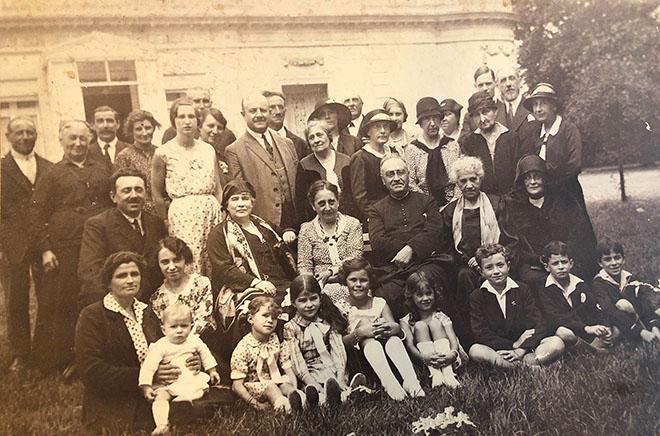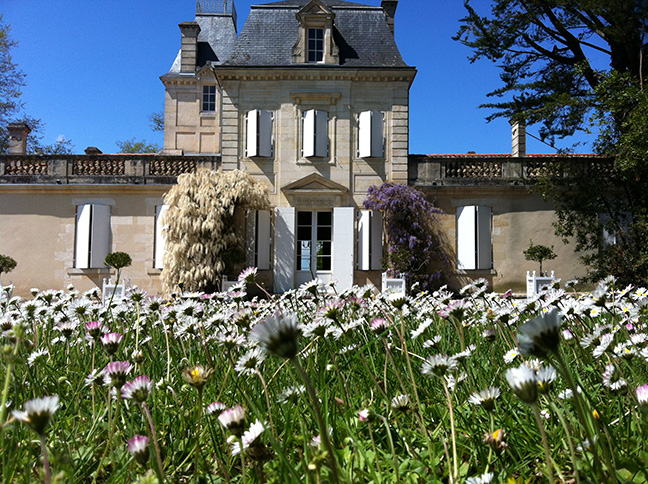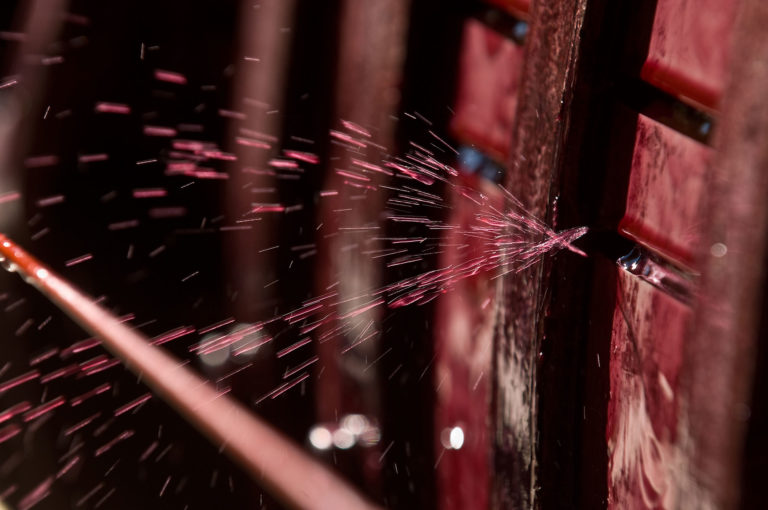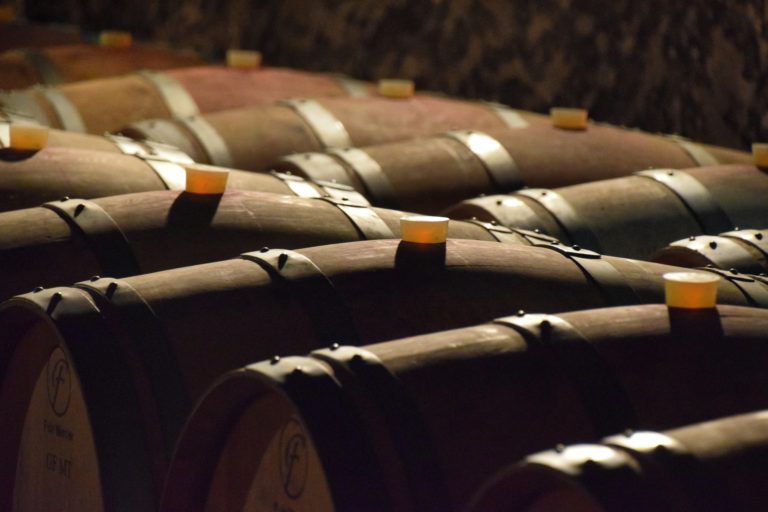The Château Coufran vineyard is located north of Saint-Seurin-de-Cadourne, a neighboring town of Saint-Estèphe in the canton of Pauillac. It extends over a hill whose top culminates at 21 meters above sea level. In a single block of 76 hectares, it is planted on soils composed mainly of fine gravel and clay.
A family story
Originally from Tarn et Garonne, the Miailhe family settled in Portets in the Graves then in Bordeaux. Known as a wine broker; the first to enter this profession was Elie, appointed Courtier Royal by letter patent in 1793 (source departmental library). The brokerage office of the same name only saw the light of day in 1818 (family source). Successive generations exercised this profession without interruption. Jean Miailhe was the last to live from this activity, which he stopped in 1970. The first member of the Miailhe family to become a winegrower in the middle of the 19th century was Frédéric (Château Siran) by chance in his private life: his marriage. Later, during the major wine crises of the 1920s to 1950s, his two sons Louis and Edouard completed their brokerage business by investing in other Médoc wines. Since the sale of Pichon Comtesse by May Eliane de Lencquesaing (daughter of Edouard), the last winegrower of this family branch is his nephew Edouard Miailhe in Siran. For the descendants of Louis, only his son Jean remained in viticulture in Coufran then in Verdignan. Since the 1980s, his two children Marie Cécile Vicaire and Eric Miailhe have taken over.


History of the château
The dovecote dates back to the time of the old regime and already in the archives of Abbot Baurein dating from the 18th century, the noble house of "Cousran" was mentioned. Many families have succeeded one another but the best known is certainly that of Baron de Brane nicknamed the “Napoleon of the vines” who will impose Cabernet en Médoc as the main grape variety. It was after the revolution that Jean-Valère Cabarrus, shipowner and merchant who already owned prestigious wine estates, acquired Château Couffran. At the end of the 19th century, the Célérier family, merchants in Bordeaux, took advantage of the influence of Bordeaux wines and the economic development of wine-growing to invest in the Médoc vineyards by buying Couffran. They also decide to do major works in the Castle to give it its final architecture. The acquisition by Louis Miailhe in 1924 is an important step for this cru. Louis Miailhe then decides on the definitive spelling of "Coufran". He began a major work of restructuring the vineyard to plant mainly Merlot Noir, a rounder and more charming grape variety, highly acclaimed at that time.
Wines
The grassing of the soil, leaf stripping after flowering and negative harvests allow the grapes to ripen in the best conditions. "The harvest is thus done "à la carte", always the Merlots first then the Cabernets later." This period requires a lot of attention and precision from them because they have to take care to optimize the quality of their harvest by grouping together the different shades of quality by grape variety (terroirs and age of the vines). Vinification is carried out according to the traditional Bordeaux method in stainless steel vats controlled by a temperature regulation system. The work of the vats (pumping over, punching down, shedding, etc.) and the duration of maceration are determined according to the characteristics of each vintage and above all the type of wine sought. At the end of the alcoholic and malolactic fermentations, various selection tastings are carried out before the final blending of the 1st wine carried out in December by the consulting oenologist Mr Eric BOISSENOT. Only 2/3 of the production will be retained for the 1st wine. This in order to best express their atypical grape varieties in Coufran and to produce a great wine for laying down which is each year at the top of the range of the appellation. The aging in barrels is done for 12 months with a renewal in new wood by 1/4 each year (only in French oak). On the occasion of fining, in the spring of the second year, a final blending takes place to ensure that the Grand Vin bottled is perfectly homogeneous. The bottles are then stored in an air-conditioned room to optimize their aging and provide customers with perfectly preserved ready-to-drink wines.



